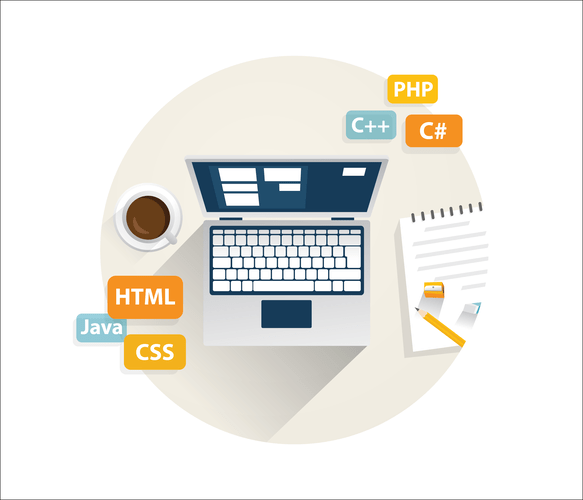Content
Microservices in the enterprise, 2021 A microservices approach to application development can present significant challenges for any organization. But increasingly, microservices users agree that the results—including improved developer productivity, greater customer satisfaction, and faster time to market—are well worth the effort. When building an application, you need to ensure that it caters to various interfaces, especially with the increase in smart devices around us. Businesses need to cover their bases and take advantage of all the market opportunities to strive and grow. Most PaaS vendors allow you to develop applications for a variety of interfaces, including smartphones, laptops, iPads, computers, and tablets, as well as different browsers and operating systems.
It’s also important to track any shifts in those values created by changes in cloud provider services and pricing, company application usage and traffic, and expenses and capital costs. Keeping careful notes on how each plus and minus is assessed — each time an assessment is made — is essential to getting the best results over time. Cloud provider relationships with software vendors, increasingly https://globalcloudteam.com/ common in the cloud market, can offer an easier pathway to private PaaS. Look at the tools available from a source that’s affiliated with all your cloud options first, and then compare it with the costs and benefits of others as you would with public cloud PaaS tools. The key to success with this approach is minimizing the number of software sources required to create the private PaaS.
What’s the Difference Between PaaS vs. IaaS vs. SaaS
Private PaaS is preferable because it allows developers to manage and execute their firm’s apps while adhering to stricter data privacy, security, and compliance policies. Because all you need to get started with PaaS is a web browser and some custom code, it’s a low-cost, scalable option for businesses that do not have the time or resources to manage their own IT infrastructure. Simplifying the tasks of application developers eliminates the need for time consuming configuration tasks, by offering a user-friendly “plug-and-play” interface. In addition, any breakdowns or changes in a supplier’s development roadmap can compromise users’ projects.
It is up for the PaaS provider to look after the platform which reduces IT costs and maintenance for users. The service PaaS provides is not constrained to cloud computing but also database, storage, memory, and computing-related services for apps. The solutions provided by PaaS are usable for either developing software or for sale purposes. PaaS is considered a cloud computing service that helps in virtualizing for offering an app-development platform for businesses or software developers. PaaS was originally intended for applications on public cloud services, before expanding to include private and hybrid options. Users pay a monthly or annual fee to use a complete application from within a web browser, desktop client or mobile app.
What is the Difference Between PaaS and iPaaS?
However, PaaS can also cut or even eliminate the cost of software licensing. Additionally, PaaS can lower your overall application management costs by taking care of patches, updates, and other administrative activities. Businesses may scale up computing resources during periods of high demand, shut them down when not needed, and pay less for cloud resources thanks to cloud computing. In this blog, we’ll concentrate on the platform as a service model , discussing its advantages and disadvantages. Initiated in 2012, mobile PaaS provides development capabilities for mobile app designers and developers.
- For your peace of mind, you should at the very least perform your data backup.
- Organizations using PaaS techniques have reported operational savings of up to 50% compared to having individual project teams manage their own siloed technology stacks.
- It is commonly utilized by people around the globe since it handles the complete web app development life cycle, from development through implementation and more.
- This happens because most large companies can easily lose visibility of engineering use and costs and try comparing the cost of Platform as a Service to Infrastructure as a Service .
- There are also Java frameworks that enable you to get up and running faster, allowing you more time to concentrate on your product.
- Furthermore, fees are frequently based on consumption, which implies that the price of a cloud application may increase merely as a result of frequent usage of particular PaaS tools.
On the one hand, it’s a great advantage that a certain part of work is done by the provider without you having to make an effort. On the other hand, your business will still be governed by the provider’s functional capabilities, speed and reliability. That’s why it’s very important to be confident in your business partner and be prepared for some unforeseen circumstances that may happen to even the most reliable provider. At the very least, you should perform your own data backup, for your peace of mind. To scale your own platform is an expensive challenge that may incur downtime. Certainly, you may take care of it in advance and create a platform, taking into account a future expected scale.
Faster Time to Market
It’s one of the main reasons a lot of CTOs are hesitant with migration or going fully native. Since the provider can see private and sensitive information, this raises concerns about confidentiality. You can create for a variety of platforms, including computers, advantages of paas tablets, mobile phones, and browsers, thanks to many PaaS providers. One of the main benefits of cloud computing is the ability to scale resources on demand. Maintaining a business’ ability to meet the changing needs of its clients is crucial.

However, as with all technological resources, PaaS isn’t right for everyone. Take these pros and cons into consideration when evaluating PaaS platforms. PaaS, along with IaaS and SaaS, is one of the main types of computing services. According to Statista, the public cloud Platform as a Service market worldwide has been growing in the last few years. That means it doesn’t matter if the platform being developed is a mobile or web interface; the integrated environment allows better efficiency for the working unit.
Platform as a service
Email, social media, and cloud file storage solutions are examples of SaaS applications people use every day in their personal lives. Popular business or enterprise SaaS solutions include Salesforce , HubSpot , Trello , Slack , and Canva . Many applications designed originally for the desktop (e.g., Adobe Creative Suite) are now available as SaaS (e.g., Adobe Creative Cloud). Compared to traditional IT, IaaS gives customers more flexibility build out computing resources as needed, and to scale them up or down in response to spikes or slow-downs in traffic. IaaS lets customers avoid the up-front expense and overhead of purchasing and maintaining its own on-premises data center. Typically IaaS customers can choose betweenvirtual machines hosted on shared physical hardware or bare metal servers on dedicated physical hardware.

MPaaS typically provides low-code (even simple drag-and-drop) methods for accessing device-specific features including the phone’s camera, microphone, motion sensor and geolocation capabilities. It provides all the facilities required to support the complete life cycle to build and deliver web applications and services entirely from internet. Additionally, it provides scalable apps and tools that can be integrated into your company and work with a variety of languages. Google App Engine software’s versatility allows a far faster time to market, as well as automated scalability as traffic grows. Furthermore, it is simple to use and inter-operable with a wide range of application programming interfaces . Platform as a Service — commonly known as PaaS — is a cloud computing model that is offered on a subscription-basis to clients by a third-party provider, usually known as a PaaS vendor.
PaaS Model Definition
By streamlining the development process with lower costs, less time, and fewer complexities, PaaS has changed the way businesses approach creation and the investments tied to them. PaaS is here to automate Ops and focus on Dev because this is where its use and tools bring value. Every service provider should aim to go further than simply deploying an app or a database and this is why PaaS was created to be more than just an abstraction of infrastructure or a cloud platform. Private PaaS is more work, and the acquired PaaS tools likely won’t be free, so it’s essential to compare the costs and benefits of private PaaS with those of traditional public cloud PaaS. Enterprises should also look at how well private PaaS tools work compared with public PaaS. Cloud providers‘ implementations of private PaaS tools can take advantage of relationships with cloud provider infrastructure that aren’t exposed to users, and thus aren’t available to private PaaS implementations.